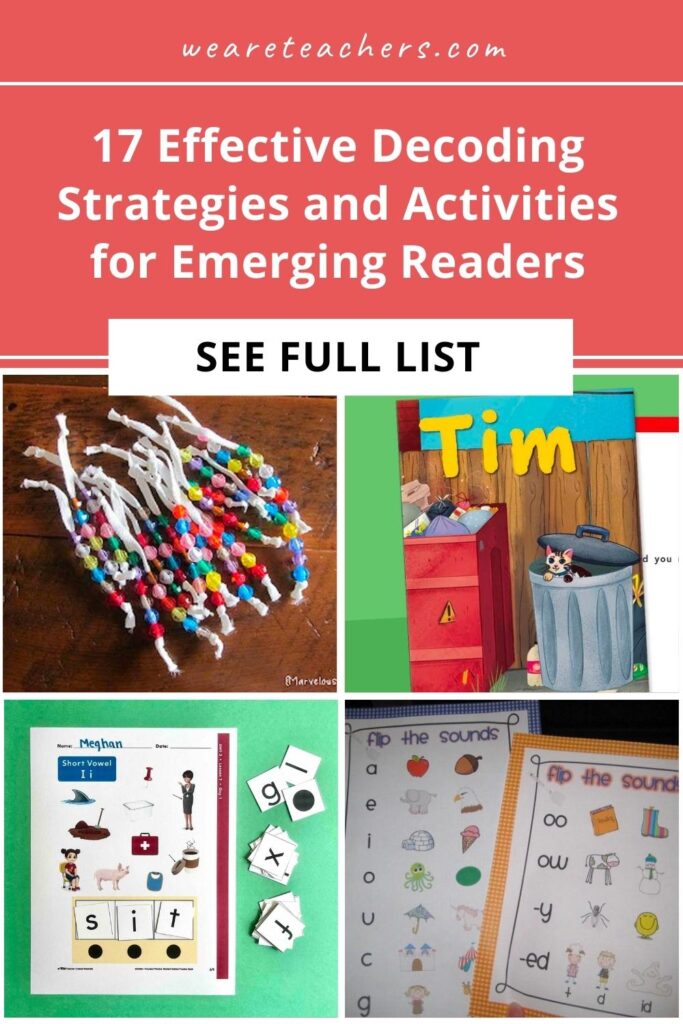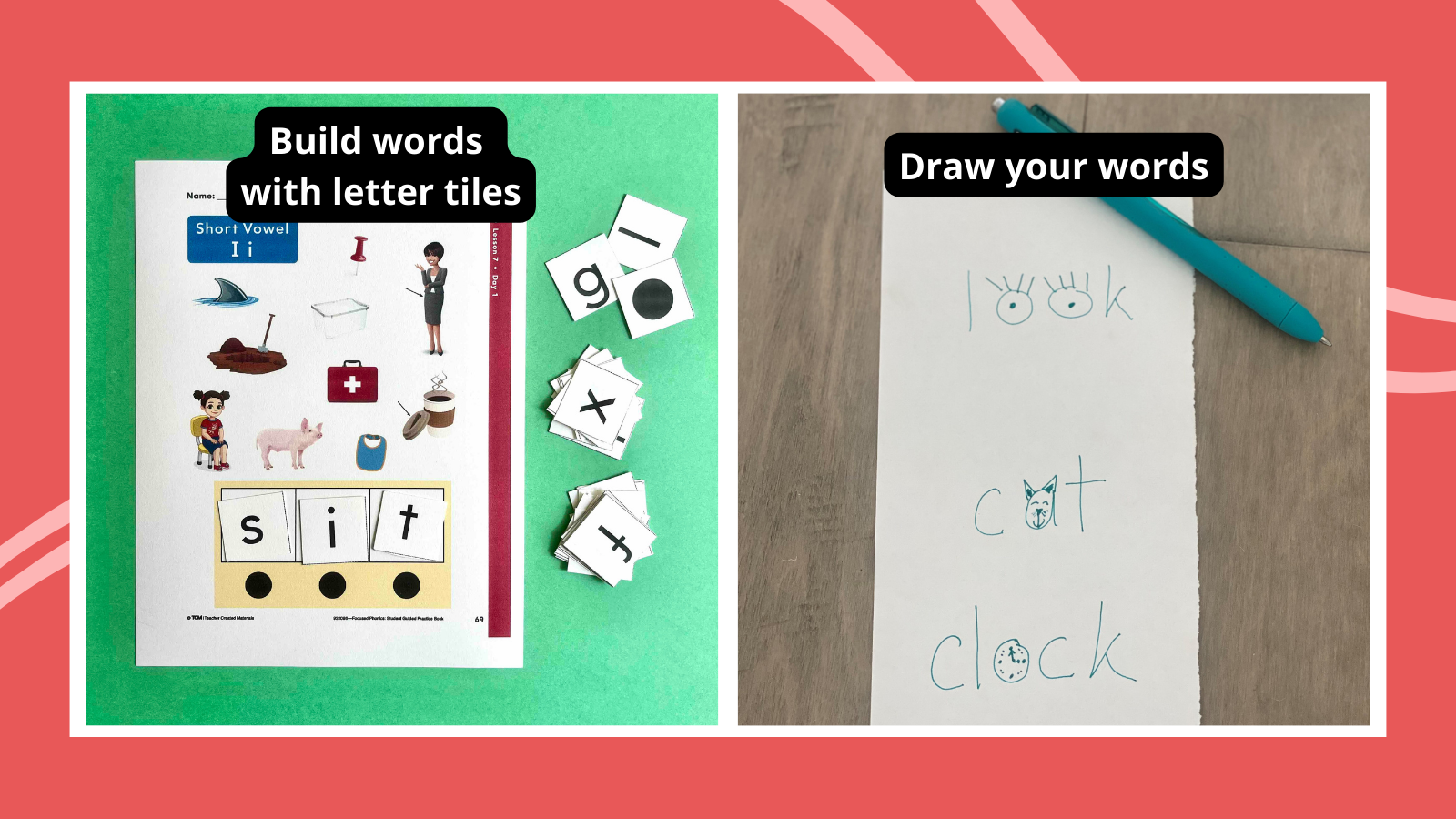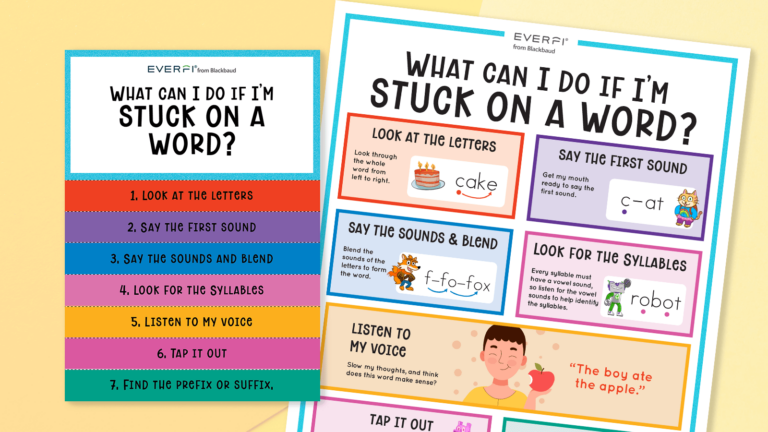When little ones start learning to read, one of the important skills they’ll need to develop is decoding. But what is decoding, and how do you teach it? Read on to learn all about decoding strategies and get lots of teaching activities.
What is decoding?
Put simply, decoding is the ability to sound out letters and understand the words they make up. A new reader needs to recognize each letter, determine the sound it makes, then put all those sounds together smoothly to say and recognize the word. The process goes slowly at first, but as kids build their skills, decoding becomes automatic, leading to reading fluency.
The theory of the science of reading puts it like this: Decoding (D) x Language Comprehension (LC) = Reading Comprehension (RC). When you learn about decoding, you’ll hear some common phrases like phonics, phonemic awareness, phonemes, segmenting, and blending. You may also encounter concepts like symbol imagery and concept imagery, since connecting mental images with letters and words helps students retain information.
All of these skills work together to create confident readers, and kids can practice them using these decoding strategies and activities. (Learn about finding good decodable texts for reading practice here.)
1. Have fun with phonics
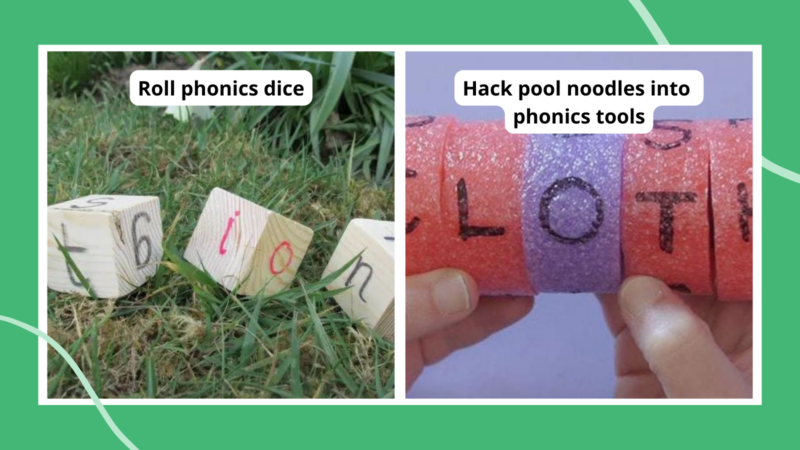
Phonics is a key part of decoding, and there are so many fun activities kids can do to learn diagraphs, phonemes, and other letter sounds and blends.
Learn more: Fun Phonics Activities and Games for Early Readers at We Are Teachers
2. Hang a decoding poster
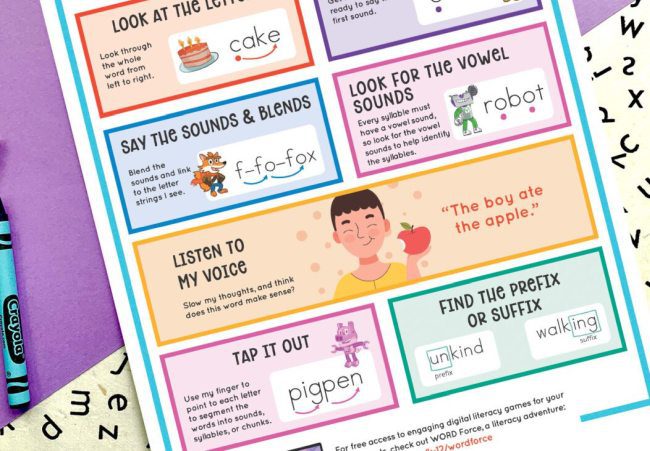
Our free printable poster has a variety of decoding strategies all in one place. Hang it in your classroom, or pass out copies to students to take home as reminders when they’re reading with their families.
Get it: Decoding Strategies Poster at We Are Teachers
3. Hunt for letter sounds in decodable books
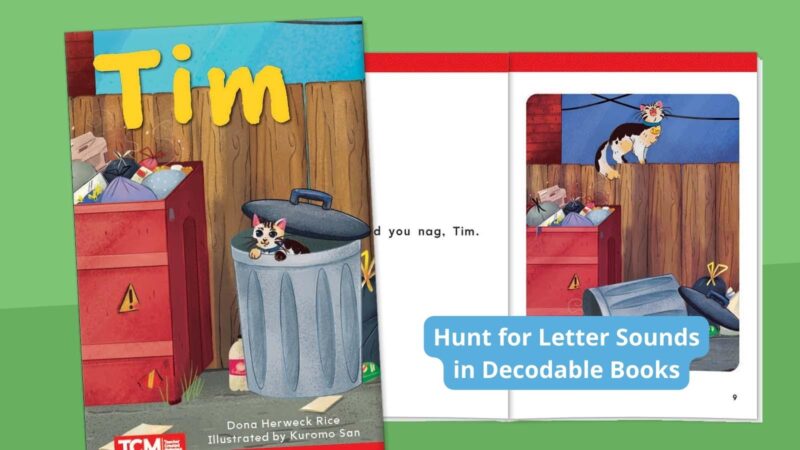
Have students hunt for words with target letter sounds (e.g., short I) in a decodable book. Then have them share the words they find with a partner. Tip: For more ideas, check out the built-in review and family engagement ideas at the end of the decodable book linked below.
Try it: Tim by Dona Herweck Rice, a free decodable book from Focused Phonics by Teacher Created Materials
4. Play hide-and-seek with words
For younger kids, place a letter manipulative into a covered box, and ask them to reach in and feel the letter. Based on what they feel, what letter do they think it is? For older kids, lay out an entire word in the box, and see if students can reach in and “feel” out the word.
5. Draw your words
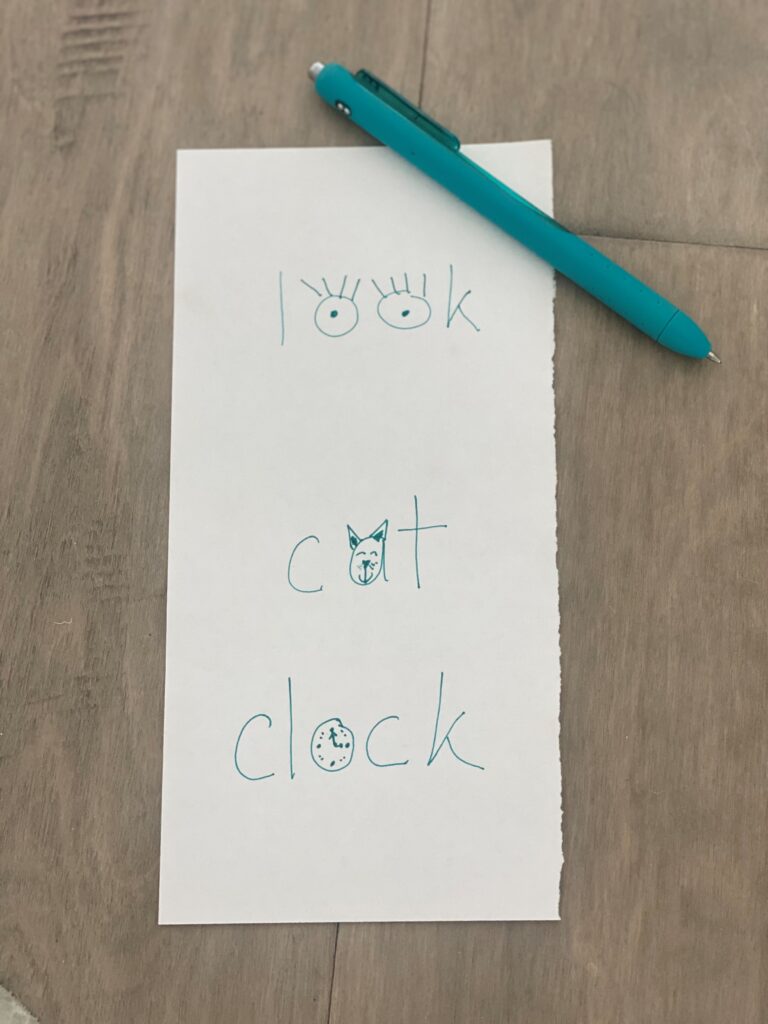
People remember pictures. When you’re introducing new words to students, ask them to draw an image that has meaning to them that goes with the word they’re learning. Even creating an image in their head has benefit, but asking them to draw an image around a word on paper can be more fun—and more valuable.
6. Twist pool noodle letters
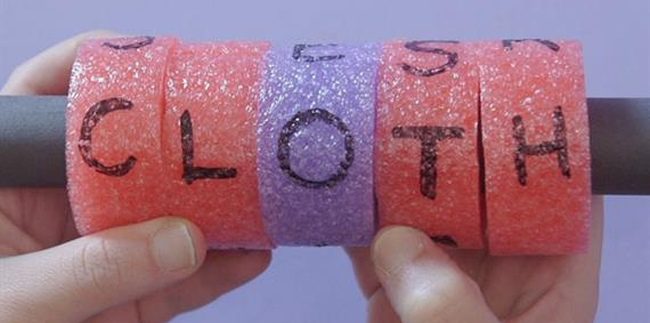
These pool noodle letter beads are so much fun, and they’re so easy to make! Slide them onto a tube of construction paper, then twist and turn them to form new words. Have students name each letter and sound it out with the beads spaced apart, then push them together and say the entire word.
Learn more: Use Pool Noodles To Teach Phonics at We Are Teachers
7. Build words with letter tiles
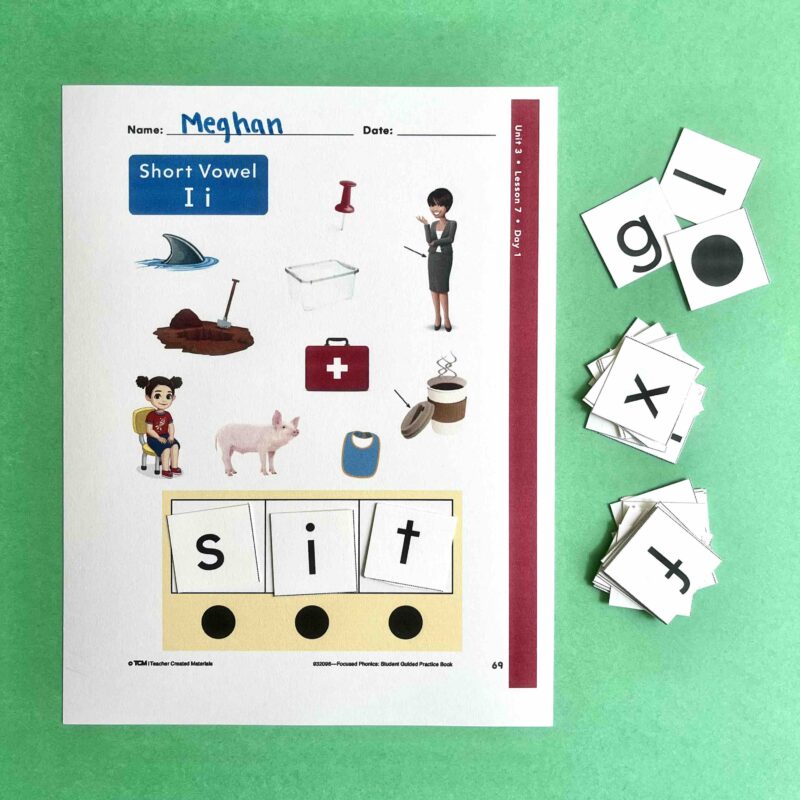
First give students a worksheet with pictures of short I words. Say the names of the pictures using the onsets and rhymes (e.g., Say, “/h/ /ip/” for “hip”) and have students point to the pictures that match the words as you say them. Then have students identify the sound that is the same in each word (e.g., /i/). Finally, have students build these words on sound boxes using letter tiles.
Try it: Free Printable Concept Card and Letter Tiles from Focused Phonics by Teacher Created Materials
8. Slide beads to practice segmenting
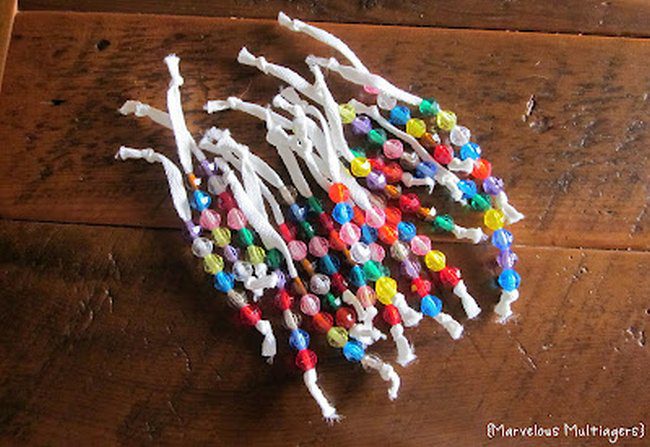
Bead slides are popular decoding strategies because they’re easy to make and simple to use. As a student says a word out loud, they slide a bead along for each syllable. This helps them segment words, breaking them down into more manageable parts.
Learn more: Bead Slides at Marvelous Multiagers
9. Write in shaving cream
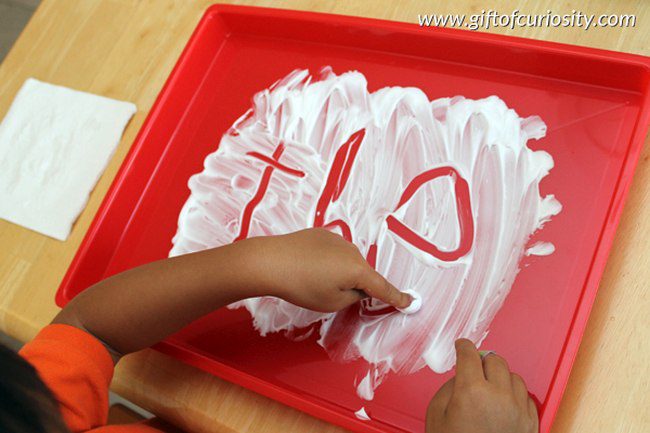
Here’s another classic decoding activity: shaving cream writing! Spread the shaving cream on desks (they’ll be squeaky clean afterward!), trays, or even windows. Then have kids write letters and words, sounding them out as they go.
Learn more: Write in Shaving Cream at Gift of Curiosity
10. Take a mind picture
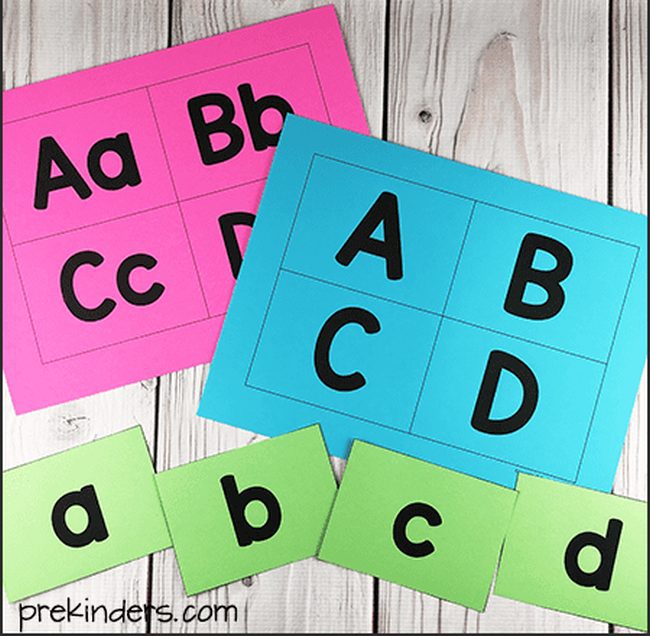
Show students a letter card and have them say it out loud, along with the sound it makes. Then, have them trace the letter with their finger. Finally, ask them to “take a picture of it” in their minds, and take the card away. Now ask them to write the letter themselves, either on paper or in the air (see below).
Get it: Printable Alphabet Cards at Prekinders
11. Write in the air
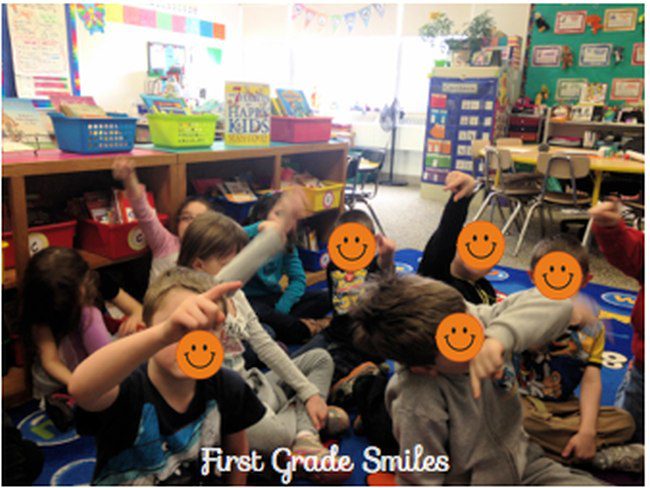
Writing letters in the air helps kids learn to “image,” or see, the letter in their heads. The experts at Lindamood-Bell recommend doing air-writing in lowercase letters, since that’s what we see most often when we read. Their research indicates that developing symbol imagery by writing in the air is more productive than writing on a piece of paper.
Learn more: Write in the Air at First Grade Smiles
12. Blend with musical plates
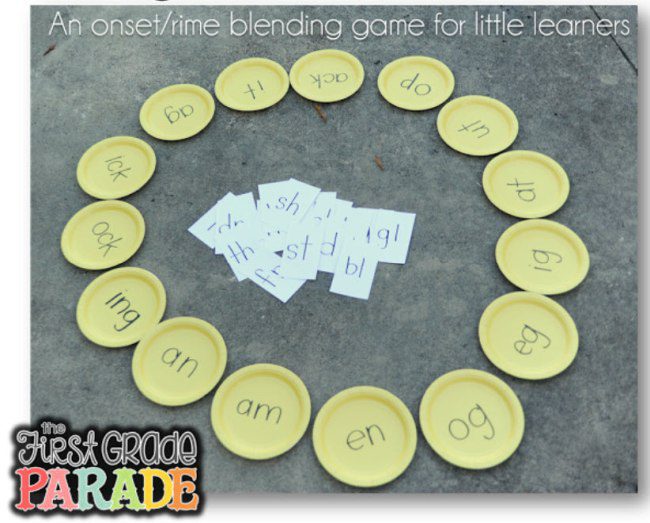
Write word endings on paper plates and lay them out in a circle. Then, give each kid a card with a word-starting blend written on it. Start up the music, and let kids dance around the circle until it stops. When it does, they match up their card with the plate in front of them, and sound it out to see if they’ve made a real word. If not, they’re out, and the game continues until you have one winner. (Unlike musical chairs, don’t remove plates after each round.)
Learn more: Musical Plates at Just Cara Carroll
13. Read left to right
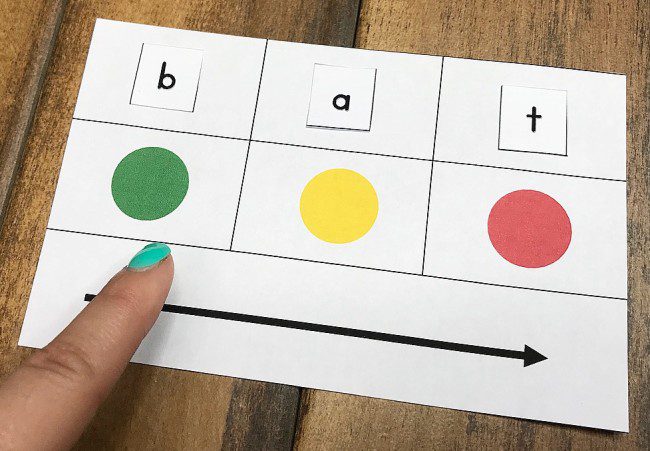
Use classic stoplight colors to help students remember to read letters from left to right. It seems like a simple concept to experienced readers, but it’s harder for some students to master than others.
Learn more: The Literacy Nest
14. Flip the vowels
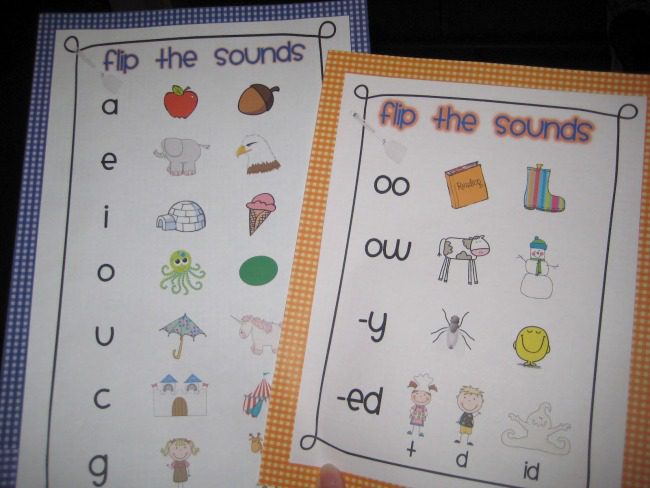
One of the trickier parts of decoding is understanding that vowels can make different sounds, depending on the word. Practice the concept by “flipping” the vowel sounds from long to short and then seeing how the word changes. Then when kids are reading new words, they can try both vowel sounds and see which makes more sense.
Learn more: Finally in First
15. Meet the Chunky Monkey
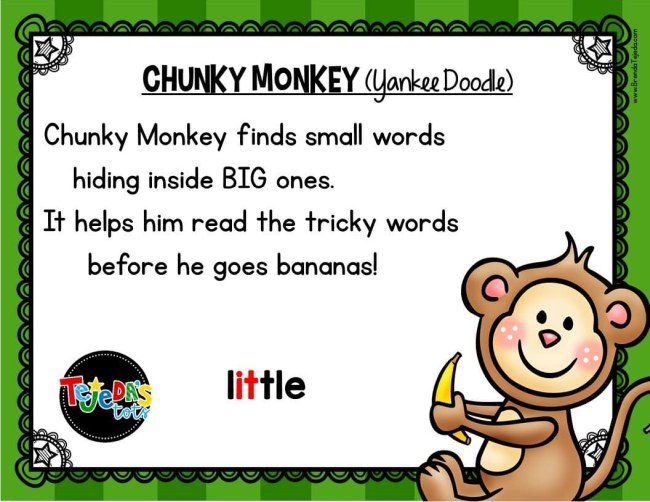
“Chunking” words breaks them into parts kids already know or find easier to sound out. This cute song to the tune of Yankee Doodle can remind students of this strategy.
Learn more: Tejada’s Tots
16. Put together word puzzles
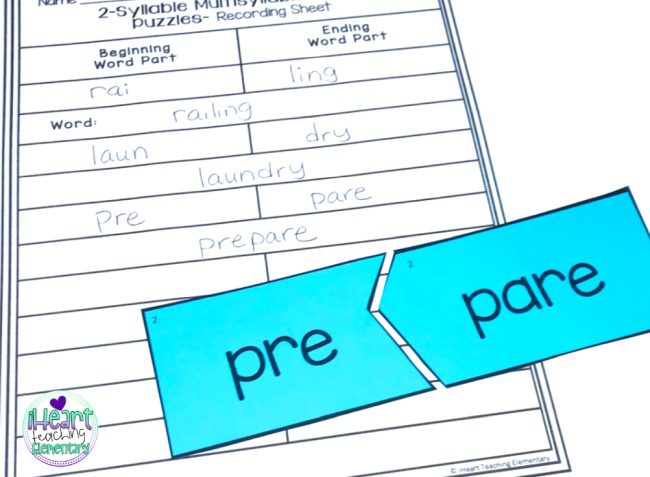
Breaking words into smaller chunks is the first step. After that, kids have to be able to put them back together to form the whole word. Simple puzzles like these help them visualize both parts of the process.
Learn more: I Heart Teaching Elementary
17. Make word-building folders
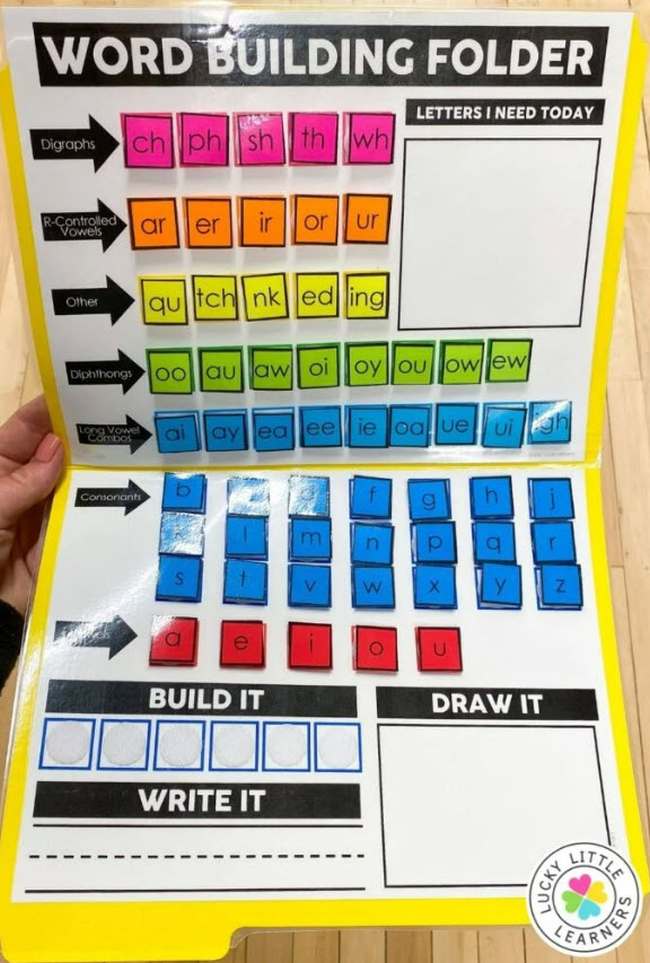
This clever little kit means kids can practice their decoding strategies just about anywhere. They build words using letters and blends, then write them out. Finally, they draw an illustration of the word, helping them use imagery to remember.
Learn more: Lucky Little Learners
What are your favorite decoding strategies to use with emerging readers? Come share your ideas and ask for advice in the We Are Teachers HELPLINE group on Facebook.
Plus, check out 49 Anchor Charts That Nail Reading Comprehension.
